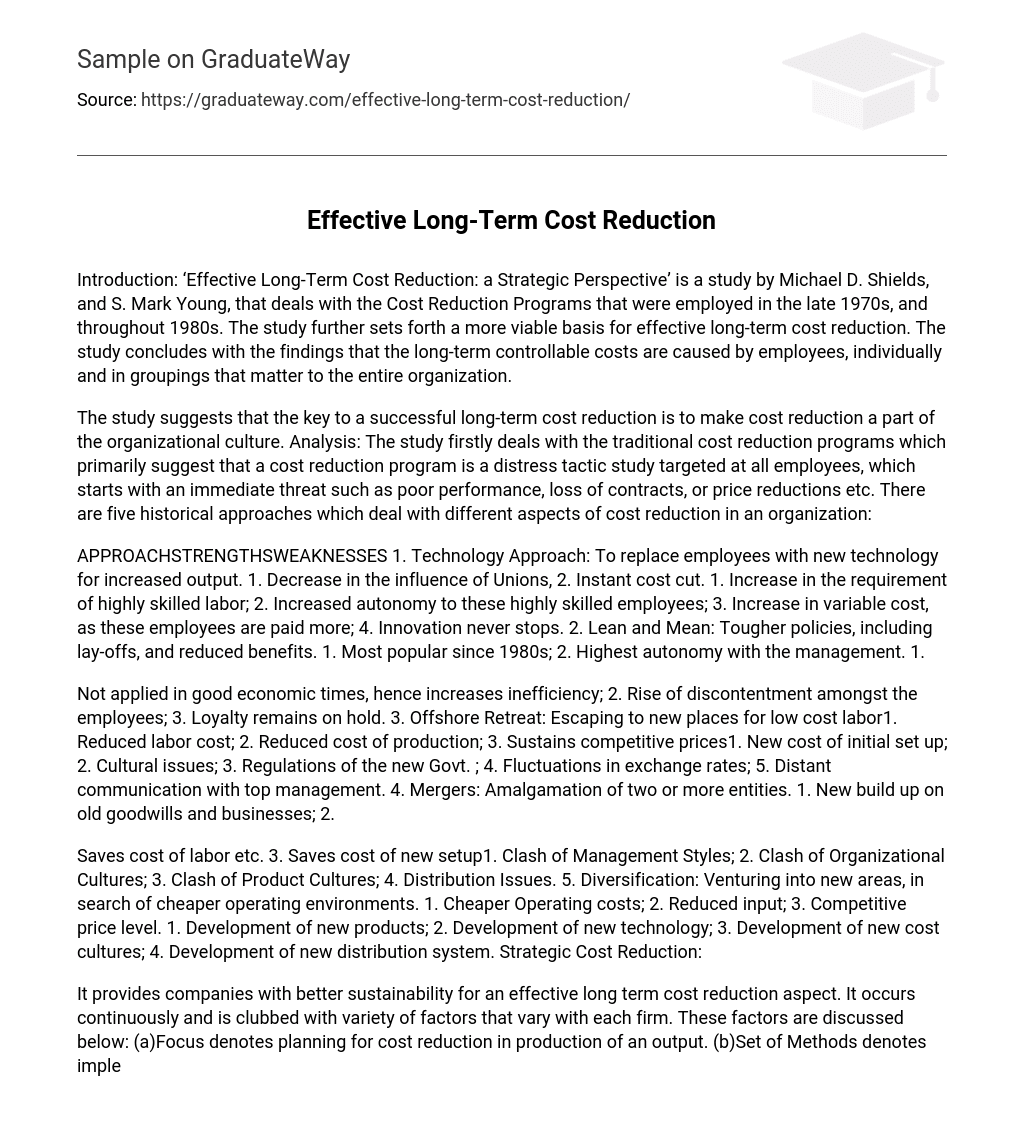The study “Effective Long-Term Cost Reduction: a Strategic Perspective” conducted by Michael D. Shields and S. Mark Young examines the Cost Reduction Programs implemented in the late 1970s and throughout the 1980s. The study proposes a more practical approach to achieve long-term cost reduction. It concludes that employees, both individually and in groups, play a significant role in influencing the long-term controllable costs of the organization.
According to the study, incorporating cost reduction into the organizational culture is essential for achieving long-term cost reduction success. The study focuses on traditional cost reduction programs that view cost reduction as a strategy to alleviate distress and involve all employees. These programs typically begin with immediate threats like poor performance, loss of contracts, or price reductions.
Improved sustainability for long-term cost reduction is offered to organizations. This process is ongoing and influenced by various factors, which vary from company to company. The contributing factors are as follows:
- Focus denotes planning for cost reduction in production of an output.
- Set of Methods denotes implementation of cost reduction strategy like Just in Time (JIM), Activity Based Management (ABM) and other coordinated ways.
- Trade Offs denotes strategically increasing cost to achieve other competitive gains in a comparative manner.
- Refining Employees behaviors denotes valuing the skills, and to nurture their potentials, besides other things in order to develop an all round organizational culture.
- Top Management must take initiative to adapt to new changes for a better result: It should motivate the employees by setting up appropriate examples; It should develop a cost culture where employees are taught the value of all costs being incurred. It should keep in mind that employees are human resources or organizational cost drivers whose productive capacities can be altered with alteration in their motivation.
- Organization Structure denotes the distribution of responsibilities within an organization: Vertical Structure is the historical or organic structure that denotes top-to-bottom flow of authority, and Bottom-to-Top flow of responsibility; Horizontal Structure denotes the setup where authority and responsibility flow on the same levels of hierarchy within an organization.
- Long Term Employment is significant in the development of loyalty of an employee, which results in better motivation, and increased productivity of the organization.
- Organizational Learning is the comprehensive manner in which all the above strategies can be used for the over all benefit of the organization as a whole. It signifies the study, observation and analysis of all the factors of Strategic Cost Reduction as discussed above.
Conclusion: In my opinion, the drawbacks of conventional methods for reducing costs highlight the significance of businesses adapting to preserve a competitive advantage in an ever-changing environment.
In order to gain a competitive advantage, businesses need to prioritize goals and make sacrifices. It is important for top management to be involved in decision-making and promote cost-consciousness. Additionally, establishing long-term relationships with employees is crucial as they contribute significantly to business growth. Furthermore, possessing a deep understanding of organizational learning and striving for efficiency in organizational processes are essential for achieving a competitive edge.





